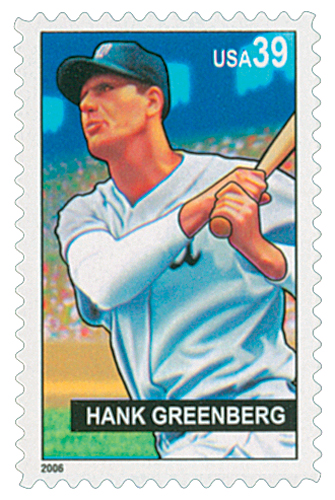
# 3511 - 2001 34c Legendary Baseball Fields: Tiger Stadium
34¢ Tiger Stadium
Baseball’s Legendary Playing Fields
City: New York, NY, Boston, MA, Chicago, IL, or Detroit, MI
Quantity: 125,000,000
Printed by: Avery Dennison
Printing Method: Photogravure
Perforations: Serpentine Die Cut 11.25 x 11.5
Color: Multicolor
Birth Of “Hammerin’ Hank”
The son of Romanian-Jewish immigrants, Greenberg was an all-around athlete, but his favorite sport was baseball. Big for his age, he practiced hard to overcome the awkwardness he felt. In 1929, the New York Yankees recruited him, but he refused, opting to attend New York University instead.
Greenberg attended college for a year before signing with the Detroit Tigers. He made his major league debut on September 14, 1930, but spent much of the next three years playing in the minor leagues. In 1933, he returned to the Tigers major league team and hit .301, driving in 87 runs. The following year he hit .339 and played a role in helping the Tigers get to their first World Series in 25 years.
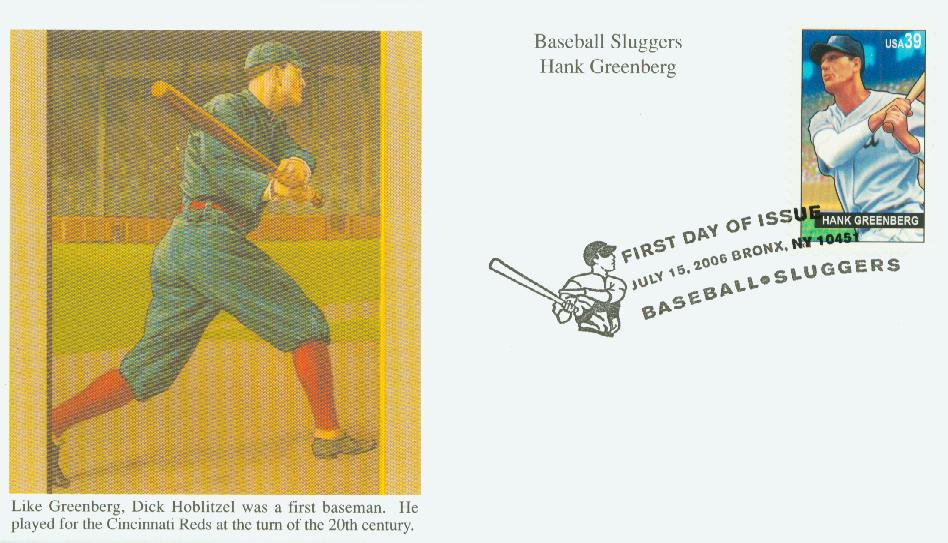
In September Greenberg announced that he wouldn’t play the September 10 game because it was Rosh Hashanah nor on September 19, which was Yom Kippur. Some fans complained, “Rosh Hashanah comes every year but the Tigers haven’t won the pennant since 1909.” Greenberg then thought over his decision and discussed it with his rabbi and ultimately decided to play on Rosh Hashanah, but still not Yom Kippur.
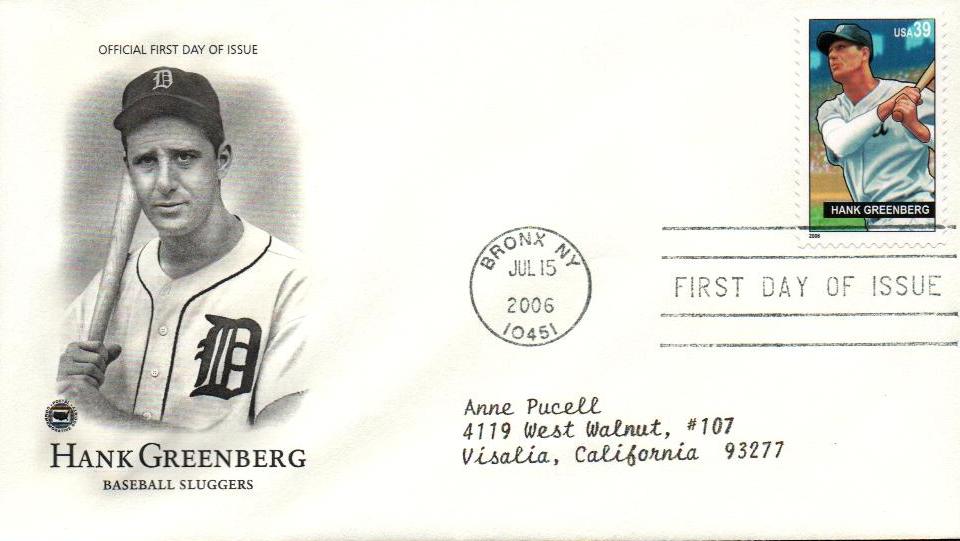
Greenberg went on to hit two home runs in the September 10 game, earning wide praise. Among this praise was a poem by Edgar A. Guest titled “Speaking of Greenberg” that read, “We shall miss him on the infield and shall miss him at the bat But he’s true to his religion – and I honor him for that.” The team lost the September 19 game and later the World Series, but Greenberg was satisfied with his decision.
During the 1935 season, Greenberg led the league in RBIs, total bases, and extra-base hits and was unanimously voted the league’s Most Valuable Player. He also helped the Tigers get to the World Series again, but suffered an injury in the second game. Happily for Greenberg, the Tigers won the World Series that year.
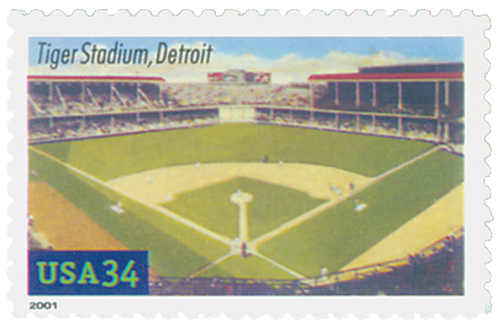
Greenberg missed much of the 1936 season due to an injury, but returned strong in 1937, hitting the first home run into the center field bleachers at Yankee Stadium. In 1938, he nearly broke Babe Ruth’s single-season home run record and set the record of 11 games with multiple home runs.
After spending the first seven years of his career at first base, Greenberg moved to left field in 1940. He led the league that year in home runs, RBIs, doubles, total bases, extra-base hits, and slugging percentage. That year he also became the first player to win the MVP award for two different positions.
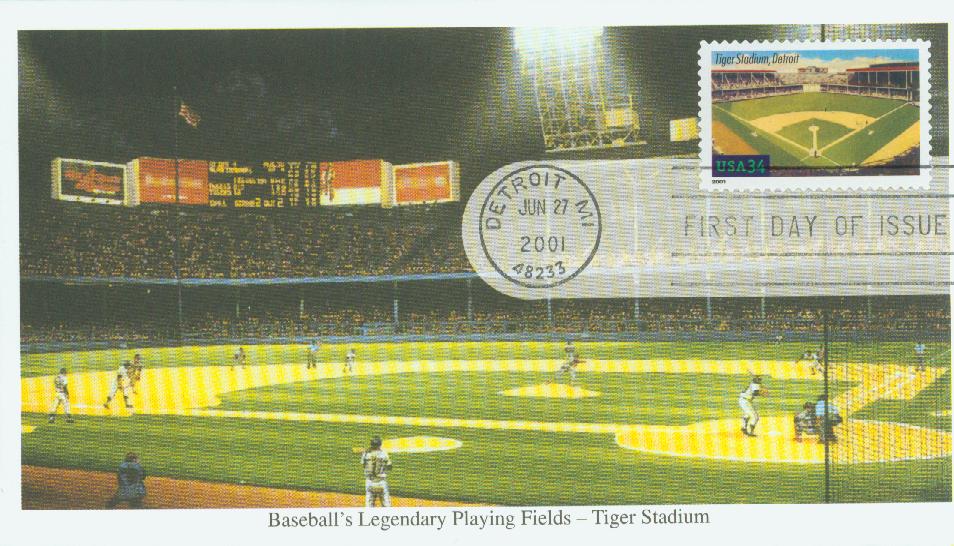
After World War II began, Greenberg became the first American League player to register for the draft on October 16, 1940. He was inducted into the US Army on May 7, 1941, and served briefly as an anti-tank gunner. He was then honorably discharged and re-enlisted with the Army Air Corps, making him the first major league player to do so. He was assigned to the Physical Education Program but requested an overseas post, so he was sent to the China-Burma-India Theater. He served there for six months going on scouting missions for B-29 bomber bases. In all, he served 47 months, the most of any major league player.
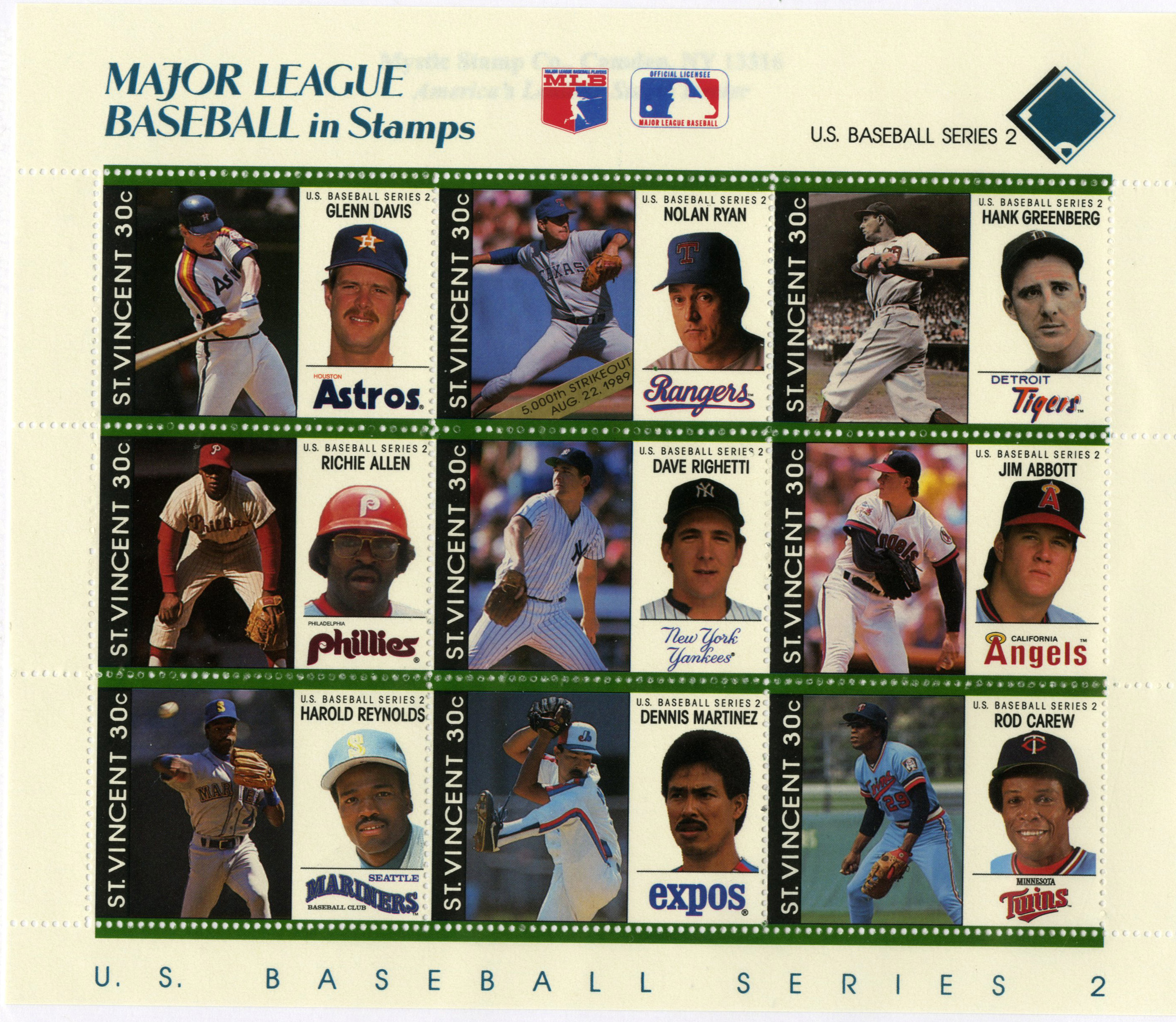
Greenberg returned to baseball on July 1, 1945. During the last game of the season, he hit a grand slam that helped the Tigers win the pennant. They went on to win the World Series that year as well. Greenberg continued to play until 1947. He had a career total of 331 home runs and averaged more than 141 runs-batted-in per year played. In all, he played in four World Series (1934-35, 1940, 1945) and on five All-Star teams (1937-40, 1945).
Greenberg went on to spend several years in management with the Cleveland Indians and Chicago White Sox. He died on September 4, 1986, in Beverly Hills, California.
Click here to see Greenberg’s career statistics.
34¢ Tiger Stadium
Baseball’s Legendary Playing Fields
City: New York, NY, Boston, MA, Chicago, IL, or Detroit, MI
Quantity: 125,000,000
Printed by: Avery Dennison
Printing Method: Photogravure
Perforations: Serpentine Die Cut 11.25 x 11.5
Color: Multicolor
Birth Of “Hammerin’ Hank”
The son of Romanian-Jewish immigrants, Greenberg was an all-around athlete, but his favorite sport was baseball. Big for his age, he practiced hard to overcome the awkwardness he felt. In 1929, the New York Yankees recruited him, but he refused, opting to attend New York University instead.
Greenberg attended college for a year before signing with the Detroit Tigers. He made his major league debut on September 14, 1930, but spent much of the next three years playing in the minor leagues. In 1933, he returned to the Tigers major league team and hit .301, driving in 87 runs. The following year he hit .339 and played a role in helping the Tigers get to their first World Series in 25 years.

In September Greenberg announced that he wouldn’t play the September 10 game because it was Rosh Hashanah nor on September 19, which was Yom Kippur. Some fans complained, “Rosh Hashanah comes every year but the Tigers haven’t won the pennant since 1909.” Greenberg then thought over his decision and discussed it with his rabbi and ultimately decided to play on Rosh Hashanah, but still not Yom Kippur.

Greenberg went on to hit two home runs in the September 10 game, earning wide praise. Among this praise was a poem by Edgar A. Guest titled “Speaking of Greenberg” that read, “We shall miss him on the infield and shall miss him at the bat But he’s true to his religion – and I honor him for that.” The team lost the September 19 game and later the World Series, but Greenberg was satisfied with his decision.
During the 1935 season, Greenberg led the league in RBIs, total bases, and extra-base hits and was unanimously voted the league’s Most Valuable Player. He also helped the Tigers get to the World Series again, but suffered an injury in the second game. Happily for Greenberg, the Tigers won the World Series that year.

Greenberg missed much of the 1936 season due to an injury, but returned strong in 1937, hitting the first home run into the center field bleachers at Yankee Stadium. In 1938, he nearly broke Babe Ruth’s single-season home run record and set the record of 11 games with multiple home runs.
After spending the first seven years of his career at first base, Greenberg moved to left field in 1940. He led the league that year in home runs, RBIs, doubles, total bases, extra-base hits, and slugging percentage. That year he also became the first player to win the MVP award for two different positions.

After World War II began, Greenberg became the first American League player to register for the draft on October 16, 1940. He was inducted into the US Army on May 7, 1941, and served briefly as an anti-tank gunner. He was then honorably discharged and re-enlisted with the Army Air Corps, making him the first major league player to do so. He was assigned to the Physical Education Program but requested an overseas post, so he was sent to the China-Burma-India Theater. He served there for six months going on scouting missions for B-29 bomber bases. In all, he served 47 months, the most of any major league player.

Greenberg returned to baseball on July 1, 1945. During the last game of the season, he hit a grand slam that helped the Tigers win the pennant. They went on to win the World Series that year as well. Greenberg continued to play until 1947. He had a career total of 331 home runs and averaged more than 141 runs-batted-in per year played. In all, he played in four World Series (1934-35, 1940, 1945) and on five All-Star teams (1937-40, 1945).
Greenberg went on to spend several years in management with the Cleveland Indians and Chicago White Sox. He died on September 4, 1986, in Beverly Hills, California.
Click here to see Greenberg’s career statistics.







